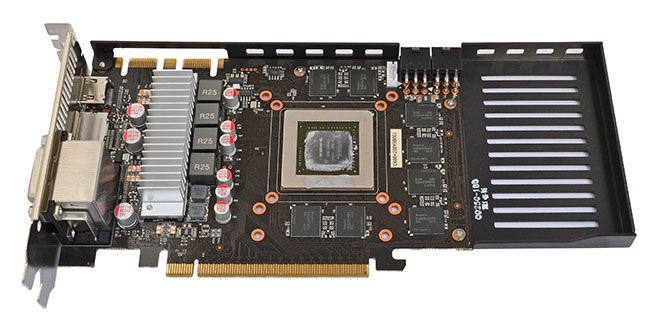Flying into the JetStream
Nvidia's recent flurry of desktop graphics-card launches looks to be coming to an end with the GeForce GTX 760 GPU released a couple of days ago. The newest member of the 7-series clan is best-described as an incomplete GeForce GTX 670; it deliberately loses out on top-end processor power in order to enable Nvidia's partners to achieve a lower price point of approximately £200.
Our examination of the reference card showed it performed at about the same levels as a slightly overclocked GeForce GTX 660 Ti and AMD Radeon HD 7950. But reference cards are just that, and it's certainly worth looking at how partners view the new GTX 760. Gigabyte has already jumped out of the blocks with a Windforce-equipped card whose overclocked speeds enable it to match the more expensive GTX 670 in our slew of benchmarks.
Next up is Palit. The company carves its Nvidia lineup into regular and overclocked cards, with the latter grouped under the JetStream banner. If recent history is anything to go by, JetStream cards tend to be big, beefy, overclocked, and, as far as it's possible, offer good value for money. That enviable list of attributes has convinced us to take a look at the GTX 760 version, which at launch is priced competitively at £210.
The red-and-gold colour scheme hints at a new cooler for the GTX 760 card but this is not the case. Appreciating the commonality between underlying GPUs, Palit uses the same card-wide cooler as found on the GTX 670 model. We have no problems with a manufacturer recycling technology under the assumption it works well. The cooler uses a couple of 92mm, PWM-controlled fans that sit quite high on the heatsink, so just like the GTX 770 variant, this card's heatsink takes up 2.5 expansion slots.
Palit's custom card isn't a grounds-up design, unlike some of the competition, because the PCB and associated layout is mainly reference - the JetStream has all eight memory chips on one side; reference splits them over both. You'll notice the board ends some way before the extended metal heatsink on the left-hand side. Look back to the first picture and it's clear that more than half of the right-hand fan is overhanging the PCB. Is not using a custom PCB significant? We'll let you know later on when the JetStream is overclocked.
There's no rear brace on the four holding screws that keep the heatsink attached to the card. The pressure is good, however, and there's very solid contact between the JetStream cooler and PCB. Should funds permit, you'll be able to run three-way SLI by using the two golden fingers on the top-right of the board.
Opening it up reveals a triple-heatpipe cooler that does without the usual copper insert found on other models. It is the array of ridged aluminium fans that give the cooler unnecessary height, as we alluded to earlier, but Palit believes having a larger surface area is worth the compromise of a taller card. Closer inspection reveals Palit uses the same Hynix memory that's present on the reference and Gigabyte cards. The core, too, is the same GK104-225 that's specific to this model.
There's little point in having a fancy-pants cooler without elevating frequencies. The card chimes in at 1,072MHz core (up from 980MHz) and is reckoned to GPU Boost up to an average of 1,137MHz. We're pleased to see the JetStream also increases the memory from 6,008MHz to 6,200MHz. Shipping clocks are competitive with other overclocked GTX 760s, and Palit is one of the few to also indulge in overclocking the memory.
You can just see the heatsink peeking out over the rear display outputs. These comprise of the usual dual DVI, HDMI and DisplayPort. Sufficiently overclocked to make it one of the fastest GTX 760s out there, we'll now see where it fits into the high-end GPU hierarchy.













